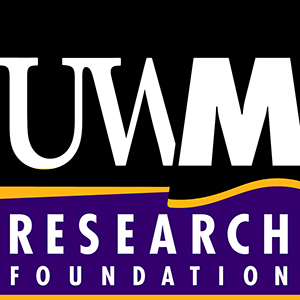UWM faculty, students and staff frequently generate valuable intellectual property (IP) through new machines, compounds, methods, curricula, and other creative works. Beyond publications and conferences, your intellectual property can make a broader impact on society through commercialization.
The UWMRF can help you get there by:
- Collaborating and educating on the commercialization process
- Evaluating inventions and creations for novelty and commercial potential
- Protecting intellectual property through patents, copyrights, and more
- Drafting, negotiating, and executing a wide range of agreements
- Connecting with industry for partnerships
- Funding early stage applied research projects through competitive grants
- Linking business mentors with UWM innovators
- Getting ideas to market through licensing and startup formation
Frequently asked questions:
Who is an Inventor?
According to the United States Patent and Trademark Office (USPTO), determining inventorship means:
- The individual(s) who conceptualizes the idea or subject matter.
Also, USPTO, an inventor is not:
- Someone whose only contribution is reducing an invention to practice by exercising ordinary skill in the art.
- A technician who simply performs experiments or assembles the invention.
- The supervisor or department manager of the person who conceived the invention.
- Someone whose only contribution is an obvious element to the invention.
- Someone whose only contribution is participation in consultations about the invention before or after conception of the invention.
- A person who only conceives of the result to be obtained but not the idea of how to achieve it.
- A person who only discovers the problem (unless they contribute to the solution).
- A person who merely provides a suggestion or improvement but who does not work to fit the suggestion or improvement into the invention.
- A second inventor of the subject matter of the invention who did not collaborate with a first inventor of the subject matter of the invention.
When should I contact UWMRF?
It is never too early to contact UWMRF when:
- A new invention arises,
- Prior to an enabling public disclosure,
- Before sending any materials to a third party,
- Before discussing your idea with a company,
- Before initiation of a confidentiality agreement.
What is my role as inventor?
The Role of the Inventor:
- Keep good lab notes that are periodically witnessed,
- Contact us before public disclosure,
- Fill out a detailed invention disclosure form,
- Help differentiate your invention from prior art references,
- Identify relevant companies to generate licensing leads,
- Examine and edit marketing documents,
- Review patent applications, brainstorm to broaden claims,
- Provide feedback on proposed licensing terms,
- Advocate for collaborative, industry-funded research,
- Publish, and let us know before you do.
How can you protect IP?
Types of IP Protection:
- Patent applications protects inventions (devices, compositions, methods, and designs).
- Copyright registration protects created works (software, curricula, photographs, and more).
- Trademark registration protects brands and distinguishes it from others.
Intellectual Property Revenue Distributions:
Patent Distributions
Click here and then choose “Intellectual Property Revenue Distribution” on the new page for more details.
Copyright Distributions
Click here and then choose “Intellectual Property Revenue Distribution” on the new page for more details.
How do I disclose an idea to UWMRF?
Process
STEP 1
DISCLOSE
Confidentially inform UWMRF about your idea early. Disclosure to UWMRF is required as a faculty or staff member.
STEP 2
EVALUATE
Intellectual property assessments (usefulness, novelty, and non-obviousness) and commercialization assessments (market size, competition, path to market).
STEP 3
PROTECT
A US provisional patent is typically the first step int he patent process.
STEP 4
PROMOTE
Identifying potential partners to help further develop and advance the technology.
STEP 5
LICENSE
An outside company takes significant interest and wishes to collaborate.

